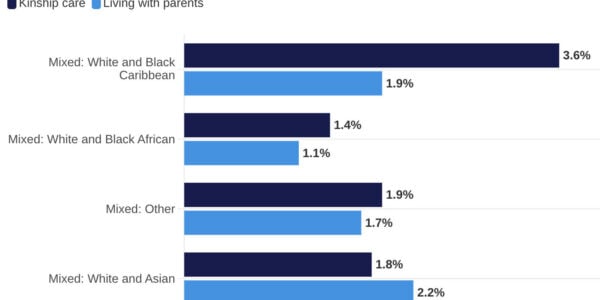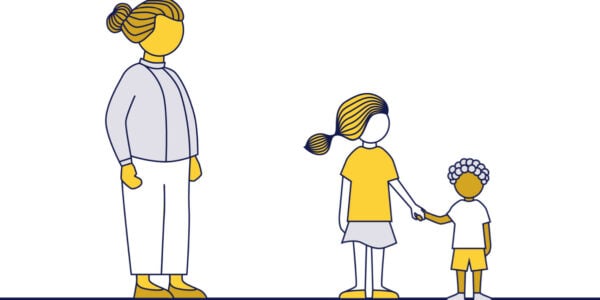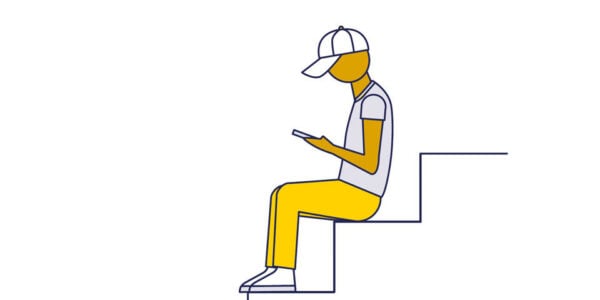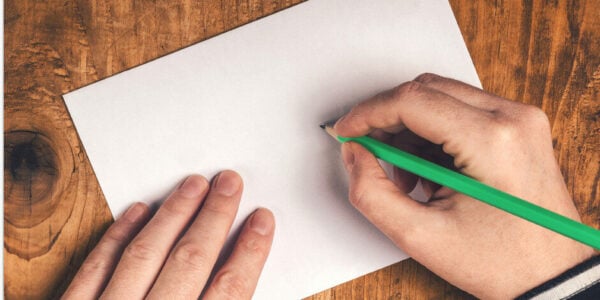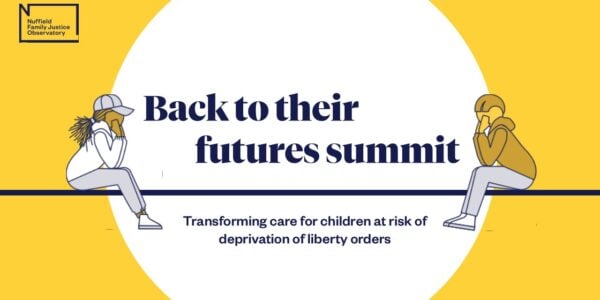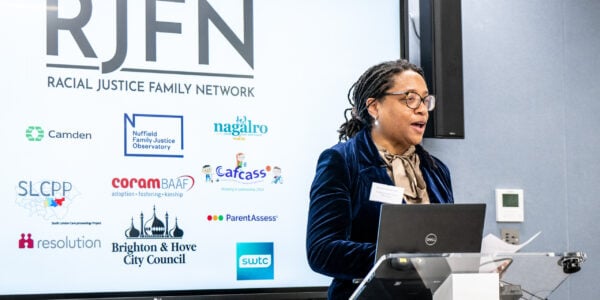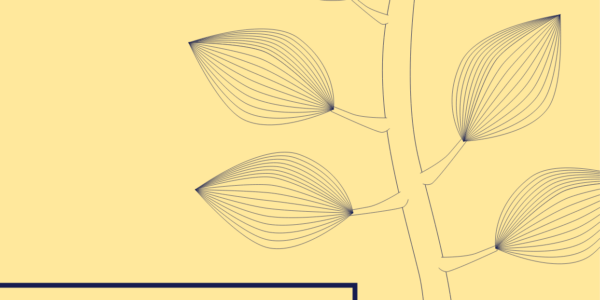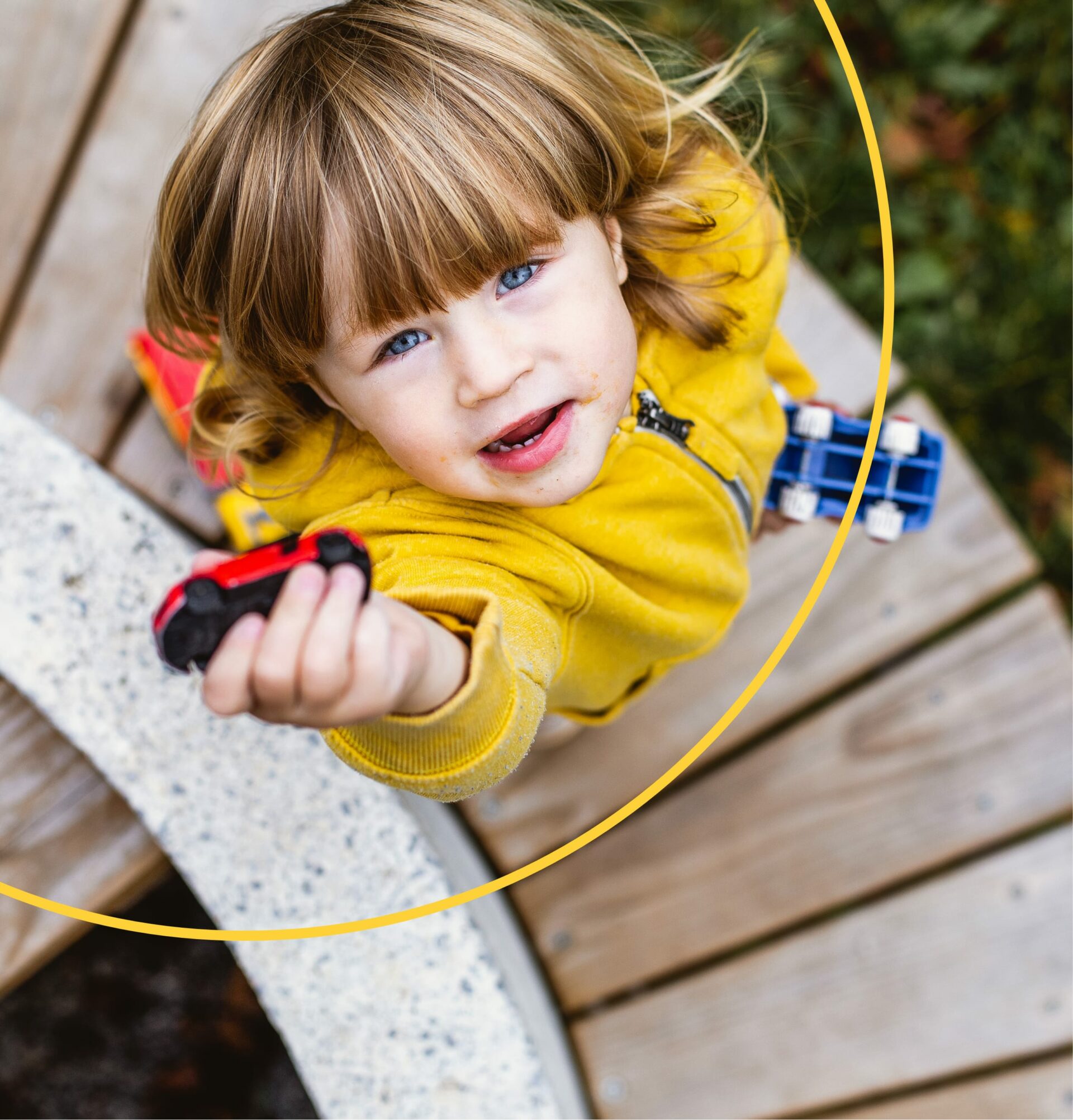We developed the HOPE Boxes to ensure no other mother is left feeling alone, judged and unsupported ever again… to let them know that they’re not the only ones, that they’re not alone. Because I remember that when I was going through it, I felt alone. It also lets them know that there are people out there that have been through this, and you will survive.HOPE Mother
In an increasing number of maternity units across the country, HOPE Boxes are providing emotional support to mothers and babies who are separated due to safeguarding concerns. The HOPE Boxes contain items to reduce the trauma experienced during separation and to help mothers and babies maintain a connection while they are apart, in preparation for the baby potentially being returned to their mother’s care. A group of mothers, who in the past were separated from their babies at birth, co-produced the HOPE Boxes initiative with midwives and other health and social care professionals.
A local authority can issue care proceedings as soon as a baby is born if it believes the baby is likely to suffer significant harm as a result of parental action or inaction (s.31 Children Act 1989). Research from Nuffield Family Justice Observatory shows the number of newborn babies involved in care proceedings has risen by 20% in England and 40% in Wales in 10 years. In some cases, urgent interim care order hearings are issued, meaning a mother will have to attend court shortly after giving birth (potentially on the same day), and her baby may be separated from her while she is still on the maternity or postnatal ward.
Separation at or close to birth due to safeguarding concerns is traumatic and severely distressing for parents (with research showing that mothers can be at acute risk of a mental health crisis during the postnatal period), while also being difficult and emotionally challenging for the health and social work professionals involved. Despite this, mothers can find themselves alone and unsupported, and the process can feel dehumanising and acutely stigmatising; the response they receive can be very different to that given to mothers who experience other types of birth trauma such as stillbirth or late-stage miscarriage.
One mother who was involved in care proceedings with her newborn baby says: “There could have been more understanding, less judgement and the whole experience could have been more humane.”
Improving support
A group of mothers – now self-named the HOPE Mothers – who had been separated from their babies wanted to help other women facing similar circumstances, drawing on their own experiences and their insight about the kind of support that would have made a difference to them. They were part of a collaborative, qualitative Born into Care research study that explored parents’ and professionals’ perspectives on state intervention at birth, and the subsequent development of best practice guidelines, which aim to help professionals better support parents and to be more equipped to deal with emotionally and ethically difficult circumstances. Building on learning from the research and innovations taking place in some parts of the country, the HOPE Mothers designed a new support offer.
Louise Slater, specialist midwife at East Lancashire Health Trust, was one of the midwives involved in the project. She says: “The women [involved in the Born into Care research] were saying they weren’t recognised as mothers. They left the hospital with no baby and no support. And they just went, and that was it. And it made a traumatic experience much, much worse. You’re a woman and [your] baby has been separated, has been taken away from you. This is massive. This is a bereavement for these women, for these families. It’s really difficult for all involved.”
You’re a woman and [your] baby has been separated, has been taken away from you. This is massive.Louise Slater, midwife at East Lancashire Health Trust
Developing the HOPE Boxes
The group had heard that midwives in some parts of the country were striving to support women facing care proceedings with a newborn baby by innovatively adapting bereavement boxes given to mothers of stillborn babies immediately following the death of the baby. This inspired the development of the Giving HOPE project and the HOPE Boxes initiative – the name being chosen by the women and standing for Hold On, Pain Eases.
Angela Frazer-Wicks MBE, a parent with lived experience of children’s social care, was a member of the advisory board for the Born into Care work. She later became a HOPE Mother and is now a director at Giving HOPE. She says: “For me, the HOPE Boxes really matter because I know exactly how it feels to be left with very little to remember my baby. Looking at a part-filled baby book, an empty hair curl box and not a single photograph of the day my son was born is such a painful reminder of the trauma we both suffered in the days and weeks following his birth. To be able to take that pain and use it to help design the HOPE Boxes gave me something positive to do with all those negative memories.”
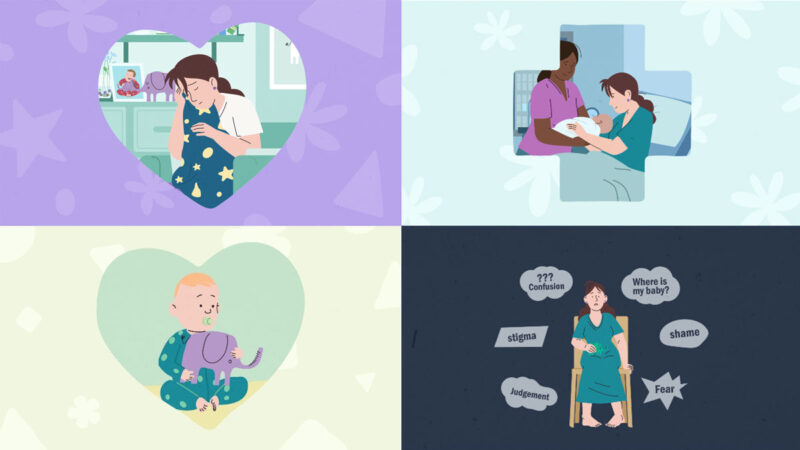
Carefully chosen contents
The HOPE Boxes contain items carefully chosen by the HOPE Mothers, as Angela explains:
“Every item in the boxes was carefully chosen to help protect the precious bond between mother and baby – one that the procedures in the system often completely destroy.”
The contents are intended to provide comfort and ease the grief, pain and trauma experienced by mothers and babies during separation; to capture babies’ important firsts; to give recognition to mothers’ experiences and their maternal identities; to reduce shame and stigma; and, very importantly, to keep the connection between mothers and their babies growing while the family court is determining the child’s long-term future – the court will not have made a final decision at this point, and the baby may potentially remain with their parent/s if it is safe for them to do so.
Two boxes are created; one stays with the mother and the other stays with the baby while they are in kinship care or foster care. Some of the items can be swapped at family time sessions to help keep a connection between the mother and baby.
If the mother and baby are not reunited, then the HOPE Boxes are important for the baby’s future, helping them to understand their own history and identity.
Holding on to hope
Claire Mason, research fellow at Lancaster University, was the lead qualitative researcher on the Born into Care research project and worked with the HOPE Mothers to develop Giving HOPE and the HOPE Boxes. She says: “Mothers interviewed in the study told us of the acute pain of separation and the lack of support received in that immediate after-math. This lack of support, together with the impact of the process of care proceedings, added to their emotional burden. Many of the women had faced multiple disadvantages and typically hadn’t been able to access the support they needed early enough in pregnancy – leading to potential short- or long-term separation from their babies. Mothers who end up going home without their child can feel abandoned and alone and with little hope. The HOPE Mothers want to make sure that mothers don’t walk out of hospital with empty arms. The feedback so far is that the initiative has been really helpful.”
One HOPE Mother says: “We developed the HOPE Boxes to ensure no other mother is left feeling alone, judged and unsupported ever again… to let them know that they’re not the only ones, that they’re not alone. Because I remember that when I was going through it, I felt alone. It also lets them know that there are people out there that have been through this, and you will survive. When you’re in that, the pain that comes with losing a child, you never think it’s going to end. Even if you have your child returned to your care, that beginning process doesn’t go away, but it gets easier over time. It’s to let these women know there are women that came before you who have been through this experience… to give the mother hope that there is a light at the end of all this, which gives them the strength to carry on fighting.
“We had to spend 10 months away from our baby, which felt like years, especially with everything we missed out on, like her first smile, her first laugh, her first solid food, sitting up and rolling over. We will never get those memories back… I know that the HOPE Boxes would have made the world of difference to mine and my baby’s journey, so that even though I don’t remember and missed so many of my baby’s firsts, they would have been there to look back on.
“Because we were so worried and busy preparing for court, we didn’t get to spend any quality time with our baby, missing many of her first few days of life. I still can’t remember that time with her; I only remember the court experience. That isn’t right for any mother.”
As another HOPE Mother explains: “It’s something to keep the connection between mother and child. I think it’s very, very important. Not just for mum, but for child as well. You miss out on little things. Like them burping, the smiling, and the feeding. Because you’re trying to fight for them. And having the HOPE Box, with them little details in, so that you can look back and go, oh that’s when that happened or oh there’s her first smile. I don’t remember that happening – but it’s there.”
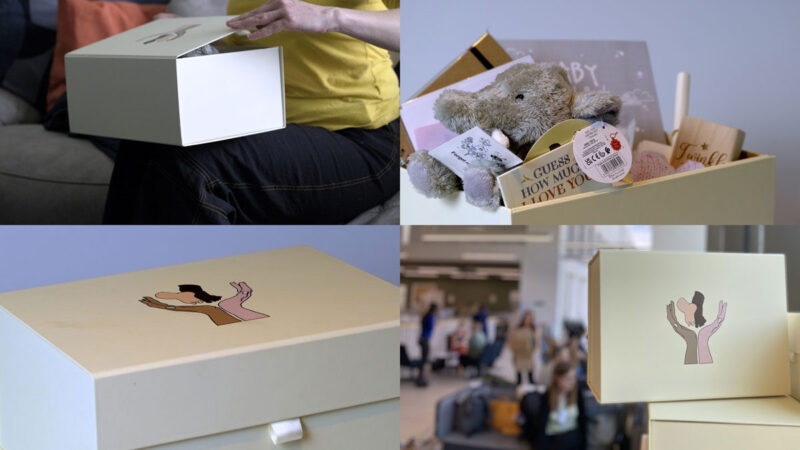
The mother’s box also includes a poem written by the HOPE Mothers to let her know that she is not alone and that other mothers have experienced similar forms of loss, to help mitigate feelings of stigma and shame. Items to aid self-care and mental health are also provided, including contact numbers for national/local services.
Claire says: “If the court decides that a baby should be placed out of their mother’s care long term, or permanently, HOPE Boxes provide important memories for them both. The inclusion of early details about the baby’s life supports longer-term loss, grief and identity work with the mother and life story work with the child. The Giving HOPE team strives to ensure that the separation is handled with care, dignity, and humanity, recognising its profound and lasting impact on everyone involved.”
One HOPE Mother says: “You do want to look back and think it’s a keepsake, for yourself, to show that you’ve had this child. It’s not like you’ve come out of the hospital and you’ve come out with nothing. Because you still have to go back to your home, where everyone knows you were pregnant… first thing anyone asks is, where’s your baby? So at least you can have some sort of comfort… where they’re not coming out with the car seat and the baby, they’re coming out with a HOPE Box, with something of the baby.”
Angela explains: “When you’re left facing the stigma and shame of removal, it really feels like no one will ever believe you are worthy of anything other than judgement and blame. It feels like there’s no way forward. You’re left isolated and thinking no one will ever understand or care about the grief and pain you are suffering.
“Coming together with other women, other mothers who have been through the same trauma, to share our experiences and build Giving HOPE has helped to heal so much of that pain. We look at one another and see strong, dedicated and selfless women working tirelessly to help others and it, in turn, helps us to see ourselves differently. All it took was someone to care enough to listen to our experiences, see our potential and then help us put our ideas into action. Co-production at its very best.
“While Giving HOPE was initially designed to give hope to others – along the way we found so much hope for ourselves. Being a HOPE Mother, and later director of Giving HOPE, fills me with enormous pride. I no longer feel I have to hide my pain or be ashamed of what I went through.
“At Giving HOPE, we know we can’t take away the devastating pain of separation, but we can help other mothers and babies feel loved, supported and less alone throughout their whole journey.’’
Claire adds: “We are incredibly grateful to all the parents from across the country who took part in the Born into Care study and the HOPE Mothers group, who have shared their insights and experiences to drive meaningful change and improve practice for other women. The HOPE Mothers group has shaped the development of Giving HOPE from the very beginning and remain central to everything we do. One of the HOPE Mothers designed the HOPE logo and many of them are involved in activities to raise awareness of the issues mothers involved in care proceedings face. They are extremely proud of what is being achieved.”
Implementing the HOPE Boxes
Claire says: “Becoming a Giving HOPE site can help health and social care practitioners to offer more compassionate, sensitive, responsive care that prioritises connection, sensitivity, and emotional well-being. We offer set-up support and training to ensure the HOPE Boxes have an impact and improve outcomes for both mothers and babies. We cover the trauma and potential emotional and psychological impact, and how and when HOPE Boxes should be offered and used – including the careful planning and discussions that will be needed with the family and professionals. For example, a mother may not feel ready to have a HOPE Box or take part in any ‘capturing firsts’ activities while she is still in hospital – it might be more appropriate to offer the HOPE Boxes later in the postnatal period. Most importantly, this is a choice – an offer from other women with lived experience.”
At this stage, the HOPE Boxes have been designed for mothers by mothers, but it is important to consider how fathers (as well as wider family members) may be included in the preparation of the boxes. Further parallel work is being developed to consider how HOPE Boxes may be adapted for fathers, particularly where the parents are living apart.
Originally led by Lancaster University, Giving HOPE has recently become a not-for-profit social enterprise, assisted by funding from the Segelman Trust and the 2024 ARC SHAPE Pitch Prize, enabling the team to rapidly expand its services and support and forge new partnerships.
This vital work was supported by Birth Companions. Kate Chivers, director of engagement at the charity, offers practical and emotional support to the HOPE Mothers group. She said: “Birth Companions began working with Lancaster University in 2019, supporting women with lived experience to take part in the Born into Care research. As the HOPE Mothers group developed, meetings have been co-facilitated by myself and Claire Mason. Together, we support the HOPE Mothers to ensure their experiences and expertise lead the way, working to drive forward this innovative and impactful therapeutic offer. Our vision is that HOPE Boxes are offered to every woman facing separation.”
While Giving HOPE was initially designed to give hope to others – along the way we found so much hope for ourselves. Being a HOPE Mother, and later director of Giving HOPE, fills me with enormous pride. I no longer feel I have to hide my pain or be ashamed of what I went through.Angela Frazer-Wicks MBE
The Giving HOPE team is currently working with 44 NHS Trusts across 22 integrated care boards. There are over 50 live sites, with approximately 30 in setup. The team is predominantly working in England, but sites are being set up in Scotland and Wales. Over 1,000 pairs of HOPE Boxes have been provided.
As well as HOPE Boxes being in demand from midwives, pre-birth teams and mother and baby assessment centres, they are also being requested by HM Prison Service to support mothers in prison, and Adoption England to support families when separation is permanent. The team is also working with Kings College London and the universities of Exeter and Essex to embed the HOPE Boxes across maternal mental health services.
In addition, a HOPE Room opened in the maternity unit at Burnley Hospital in East Lancashire in May 2025. It was designed by Natalie Woodruff, specialist midwife at East Lancashire Health Trust, in partnership with one of the HOPE Mothers. It is a place for mothers to spend quality time with their babies in private, prior to separation or while they are waiting to attend court. There is also a computer available in the room, providing mothers with the option to attend court hearings remotely.
More information on HOPE Boxes, including an animation, can be found at givinghope.org.uk. To find out how to become a Giving HOPE site, please contact the team at info@givinghope.org.uk.
A number of health trusts and local authorities are implementing other compassionate, trauma-informed practice, systems and processes in maternity settings to support parents facing care proceedings with newborn babies – you can find out more on the Born into Care: Best practice guidelines and other resources page.
